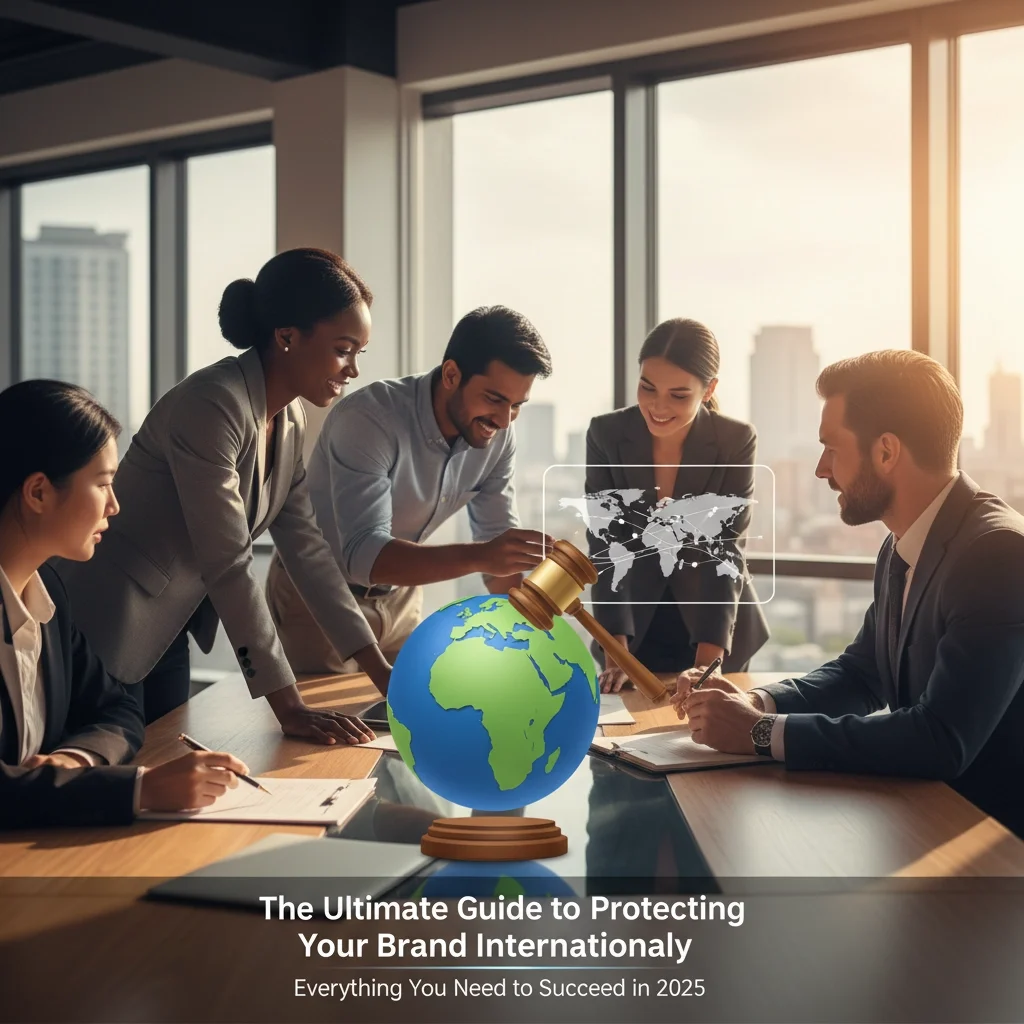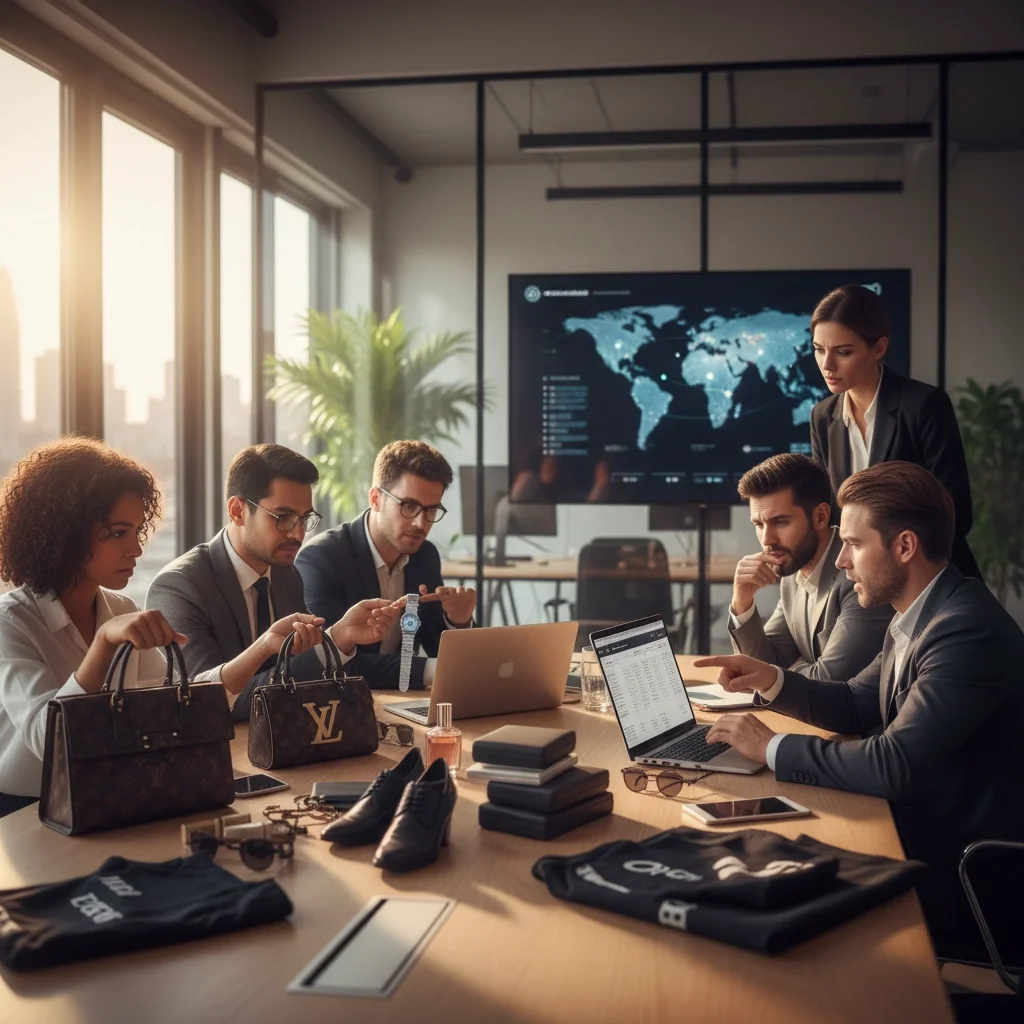The Ultimate Guide to Protecting Your Brand Internationally: Everything You Need to Succeed in 2025
Your brand is under attack: and the threats aren't coming from where you might expect. In 2025, even if you're only selling domestically, counterfeiters operating from halfway around the world can steal your intellectual property, damage your reputation, and drain your revenue through sophisticated digital operations. The interconnected nature of today's global marketplace means that protecting your brand internationally isn't just smart business: it's essential for survival.
The stakes have never been higher. Modern counterfeiters don't need to operate in your home market to cause serious damage. They're leveraging AI-powered tools, exploiting e-commerce platforms you've never heard of, and targeting international markets using your stolen trademarks. Meanwhile, the same digital transformation that's created incredible opportunities for legitimate businesses has also armed bad actors with unprecedented capabilities to harm your brand at scale.
But here's the good news: with the right strategy and expert guidance, you can build a fortress around your brand that works across borders. This guide will show you exactly how to protect what you've built, generate new revenue streams through international expansion, and turn your intellectual property into a competitive advantage that competitors can't touch.
Why International Brand Protection Can't Wait Until Tomorrow
The global threat landscape has fundamentally shifted. Research shows that companies with registered trademarks are 67% more likely to successfully defend against infringement compared to those relying solely on common law rights. But domestic registration alone isn't enough: your legal protection remains confined to areas where you actively conduct business, leaving your brand vulnerable in expanding or potential markets.
Consider this: counterfeit products targeting your brand almost certainly originate from outside your primary market, regardless of whether you sell internationally. E-commerce platforms have enabled these bad actors to establish shadow markets in foreign countries using your stolen trademarks, often without your knowledge until significant damage is done. Economic pressures and geopolitical instability continue fueling illicit trade, making 2025 a particularly challenging year for unprepared brands.
The cost of reactive versus proactive protection tells the story. While preventive trademark registration and monitoring systems require upfront investment, the alternative: fighting to recover stolen domains, removing counterfeit listings, and rebuilding damaged reputation: costs exponentially more. Companies that wait until they're facing international infringement often find themselves in legal battles across multiple jurisdictions, facing enforcement challenges in countries with varying intellectual property protections.
Building Your Trademark Foundation: The Smart Way to Start
Registered trademarks provide the legal foundation for everything else in your protection strategy. Beyond exclusive nationwide rights to use your mark for specific goods and services, registration creates legal presumption of ownership in court proceedings, provides public notice of your trademark claim, and enables you to bring federal legal action against infringers.
The registration process itself has become more strategic in 2025. Rather than taking a scatter-shot approach across dozens of countries, smart businesses are conducting comprehensive risk assessments to identify where their most valuable brand assets face the greatest exposure. This involves analyzing competitor activity, evaluating market expansion plans, and understanding the regulatory environment in target regions.
Working with qualified international trademark attorneys pays dividends throughout this process. Experienced counsel can navigate the complex filing requirements across different jurisdictions, advise on local enforcement mechanisms, and help you understand cultural considerations that affect how your brand is perceived and protected. The investment in proper legal guidance during registration often prevents much larger expenses down the road.
Deploying AI-Powered Digital Protection at Scale
Modern brand protection in 2025 requires continuous automated monitoring across multiple digital channels. Effective strategies deploy AI-powered tools to scan domains, online marketplaces, social media platforms, and mobile app stores for potential infringements. These systems can identify fake product listings, track newly registered domains resembling your brand names, and flag suspicious social media profiles impersonating your company.
Speed, scale, and intelligence define successful digital protection strategies. Sophisticated bad actors can now use generative AI to create convincing fake endorsements, fabricated product reviews, and deceptive marketing materials that appear authentic to consumers. However, the same technology provides defenders with powerful capabilities: machine learning algorithms can process massive amounts of data to identify patterns and anomalies that human analysts might miss.
Prioritization becomes critical when automated systems detect hundreds or thousands of potential threats daily. Advanced protection platforms use AI to analyze and categorize risks automatically, distinguishing between critical threats requiring immediate attention: such as executive impersonation, high-impact phishing sites, and trademark violations: and lower-priority items that can be addressed through routine processes. This intelligent triage ensures your team focuses resources where they'll have the greatest impact.
Navigating the Complex World of International Enforcement
Understanding enforcement mechanisms across different jurisdictions requires specialized expertise. Each country maintains its own intellectual property laws, court systems, and cultural attitudes toward brand protection. What works effectively in the United States may prove inadequate or inappropriate in other markets, making local legal counsel essential for successful international protection.
Smart enforcement strategies begin with understanding the full range of available options. Beyond traditional litigation, many countries offer administrative procedures for trademark enforcement that can be faster and more cost-effective than court proceedings. Some jurisdictions provide specialized intellectual property courts with streamlined processes for handling infringement cases. Others maintain robust customs enforcement programs that can intercept counterfeit goods at borders.
The most effective approach combines multiple enforcement mechanisms strategically. Administrative takedown processes can quickly remove infringing online content, while customs enforcement prevents physical counterfeits from reaching consumers. Traditional litigation remains important for high-value cases or repeat offenders, but it shouldn't be your only tool. Working with experienced international counsel ensures you're leveraging the most appropriate and cost-effective enforcement mechanisms for each situation.
Creating Consumer Trust Through Authentic Brand Signals
Trademark protection significantly impacts consumer perception and purchasing behavior. The registered trademark symbol signals legitimacy and professionalism to customers, building confidence in their purchasing decisions. Research indicates that 73% of consumers consider brand authenticity when making purchases, making trademark protection a direct contributor to sales performance.
Protected brands typically command higher customer loyalty rates because consumers feel more secure purchasing from companies that demonstrate commitment to quality and authenticity. This trust translates into tangible business value: your registered trademark portfolio becomes an appreciating asset that enhances your company's overall valuation and can be licensed for additional revenue streams.
Consumer education represents an often-overlooked component of comprehensive brand protection. Helping customers identify authentic products and avoid counterfeit goods creates a more informed customer base that actively supports your brand protection efforts. Simple steps like prominently displaying trademark symbols, providing authentication guides, and maintaining clear communication about authorized retailers can significantly reduce consumer vulnerability to counterfeit products.
Leveraging Technology for Proactive Brand Monitoring
Comprehensive domain management prevents many problems before they start. Securing relevant domain names across multiple extensions and geographic regions stops cybersquatters from exploiting your brand. This proactive approach costs far less than attempting to recover domains through legal proceedings after bad actors have registered them.
Social media protection requires dedicated attention as platforms continue multiplying. Establishing official accounts on major platforms, verifying them through available authentication programs, and monitoring for impersonation accounts should be standard practice. Many platforms now offer trademark holder tools that can accelerate takedown processes when unauthorized accounts appear.
Mobile app monitoring has become equally important as app stores represent new frontiers for brand abuse. Counterfeiters frequently create fake apps using legitimate brand names and logos, either to distribute malware or to capture user data. Regular monitoring of major app stores, combined with rapid takedown procedures, helps protect both your brand and your customers from these threats.
Building Your International Legal Strategy Team
Creating an effective international brand protection strategy requires assembling the right team of legal professionals. Because intellectual property landscapes vary significantly across countries, there's no one-size-fits-all solution. Small and medium-sized enterprises should leverage multiple resources to identify where their risk exposure exists and determine how to mitigate that risk in economically viable ways.
Start by engaging with domestic counsel who have experience with international intellectual property issues. These attorneys can provide valuable insights into common challenges and effective approaches while helping you understand the costs associated with registration, monitoring, and enforcement in different markets. They can also help you research and select qualified in-country legal counsel who understand both local legal environments and international trademark law.
When working with foreign attorneys, come prepared with specific questions about your unique situation and strategy. Understand factors like the strength of intellectual property laws, the efficiency of court systems, and cultural attitudes toward brand protection in different regions. This preparation ensures you're making informed decisions about where and how to invest your protection resources for maximum impact.
Measuring ROI and Adjusting Your Strategy
Effective brand protection strategies require regular measurement and adjustment. Key performance indicators should include the number of infringements detected and resolved, the time required for successful takedowns, and the prevention of revenue loss through early threat identification. Advanced analytics can help you understand which protection mechanisms provide the best return on investment for your specific situation.
Regular portfolio reviews ensure your protection strategy evolves with your business. As your company grows and enters new markets, your trademark portfolio should expand accordingly. Similarly, changes in the competitive landscape, regulatory environment, or threat patterns may require adjustments to your monitoring and enforcement approaches. Quarterly reviews with your legal team help keep your protection strategy aligned with business objectives.
The investment in comprehensive international brand protection delivers measurable returns through preserved revenue, maintained reputation, and sustained customer trust. Companies that implement proactive protection strategies typically see reduced costs associated with reactive enforcement, improved brand valuation, and enhanced customer confidence that translates directly to sales performance.
Your Next Steps for 2025 Success
The regulatory environment continues evolving, with marketplace rules tightening and AI-driven detection giving brands improved capabilities. However, larger brands have more to lose and require more comprehensive protection than ever before. The key to success lies in combining preventive measures with responsive capabilities while working with experienced legal counsel who understand the international landscape.
Begin by conducting a comprehensive risk assessment that identifies your most valuable brand assets, the geographic regions where you face greatest exposure, and the channels through which threats most commonly emerge. Use this assessment to prioritize your protection investments, focusing resources on areas where risks and potential impacts are highest.
Remember that brand protection is an ongoing commitment that must evolve as your business grows. International compliance and contract expertise becomes increasingly valuable as you expand into new markets, ensuring your protection strategy remains current and effective against emerging threats. The companies that thrive in 2025's complex global marketplace will be those that treat brand protection not as an expense, but as a strategic investment in long-term success.
Legal Disclaimer: This blog post is for informational purposes only and does not constitute legal advice. International trademark and intellectual property laws vary significantly by jurisdiction and individual circumstances. For specific guidance on protecting your brand internationally, consult with qualified legal counsel experienced in international intellectual property law. The Evans International Law Firms, LLC can be reached at admin@TEILfirms.com for professional consultation regarding your specific brand protection needs, or simply click the link below to get support.





